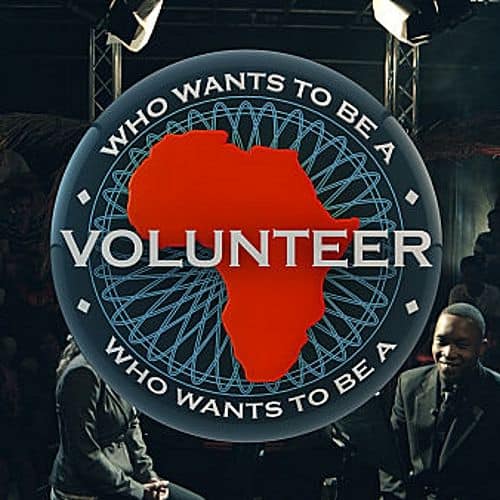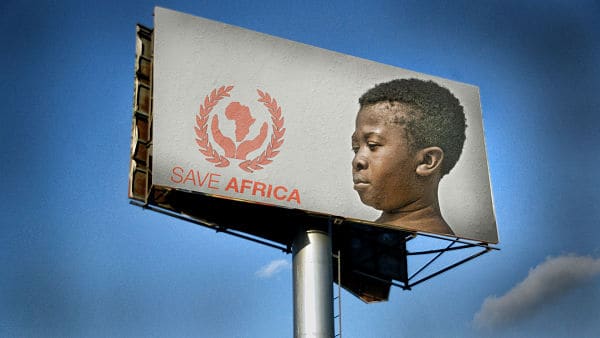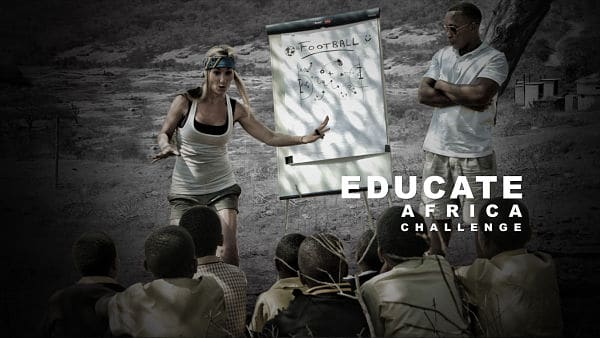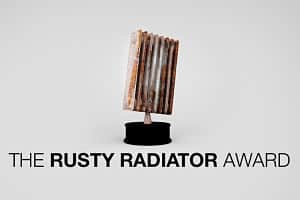Yesterday we highlighted one important development that took place for the Allegra team in March of 2014, namely that we were joined by Ninnu Koskenalho who for the following two years acted as Allegra’s Manager of Things & Stuff. Well, something at least equally significant happened in November of the same year: Allegra’s team was joined by Andrea Klein, a wizard of websites and a true perfectionist, in the best possible sense of the word.
Of course ‘core Allies’ had both known and worked with Andrea for quite some time before and thus we knew what a fabulous fortune it was to have her join our team – as has since been proven many times over. Andrea is today indispensable for so many aspects of the website that, well, in fact we don’t even know what all she is capable of.
This post – first published on November 11, 2014 – was the first one that Andrea ever did for us. This post as well as the Rusty Radiators initiative are among our all-time favourites, and thus it is a great pleasure to share them as a part of this tribute to our Allies.
We have no idea how many posts Andrea has done since herself – and more importantly still, as of January 2016 Andrea has followed Ninnu Koskenalho as Allegra’s Manager of Things & Stuff, which in plain language means that she oversees everything with our ‘production line’. In case there remains any doubt: there is NO way that we could run the website without her!
*****************************
Enough already! Combating stereotypes with Rusty Radiators #humanrights
By Allegra, SAIH & Rusty Radiators team
One of Allegra’s ABSOLUTE favorite projects of 2013 was the Rusty Radiator Awards criticizing prevalent stereotypes within international humanitarian work. We are all familiar with them – the blond woman from the global north, or the young male determined to save the world’s underdogs, namely the brown-skinned undereducated ‘hordes’ of an area commonly referred to simply as ‘Africa’. (Remember also our own take on ‘the Good Celebrity’).
This week has given this issue unsuspected new visibility as Bob Geldof announced that he is re-releasing his aid single from 1985 ‘Do they know it’s Christmas?’ to target the current Ebola crises. This announcement was met with great upset over it’s ill timing – fight against Ebola has been ongoing with full intensity in different parts of Africa via local efforts for a good while already, and thus Geldof’s initiative this late comes forth as belittling them. Geldof’s initiative does also resonate with unfortunate ‘White Savior’ complexes, which feel sorely out of place today.
Thus the Rusty Radiators campaign of 2014 arrived at a pivotal moment, and it is raising headlines all around. The video accompanying the 2013 awards ‘Aid for Africa Gone Wrong’ did some delicious work in challenging these perceptions with their smarty pants lead child actor who – despite of his impressive range of emotions including ‘the sad African’ – failed to keep a straight face while he witnessed the frail development worker struggling to complete her very first aid video.
By the end of the video, as this delicately robust kid whizz was depicted as falling behind the pack of kids running with gazelle-like speed after the departing aid vehicle, one could not agree more with his out-of-breath statement: It’s hard work to be in the aid business!
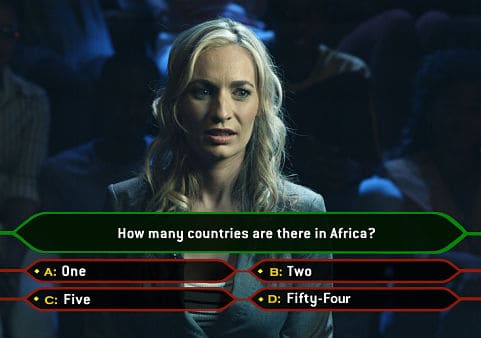 The video for the campaign of 2014 features a very familiar seeming game show – didn’t I just watch this last week? – titled ‘Do you want to be a Volunteer?’ The punch line of the skit is the following question, the very last one in the long process to become a Volunteer: How many countries are there in Africa? And the answer? Well, just watch the video for yourself! (It’s worth every second!)
The video for the campaign of 2014 features a very familiar seeming game show – didn’t I just watch this last week? – titled ‘Do you want to be a Volunteer?’ The punch line of the skit is the following question, the very last one in the long process to become a Volunteer: How many countries are there in Africa? And the answer? Well, just watch the video for yourself! (It’s worth every second!)
Rusty Radiators is an initiative launched in 2013 by the SAIH – Norwegian Students’ and Academics’ International Assistance Fund, an entity founded in 1961 as a part of the Norwegian students’ anti apartheid movement.
Today the Fund is involved in numerous projects – and being the critical observers that we are, we cannot but notice that some of them do resonate with familiar rhetoric in international aid which we, alongside infinite other scholars, have argued is equally troublesome for reproducing stereotypes: their website mentions ‘education in development cooperation, as well as North/South information and political advocacy in Norway’; ‘support for local organisations and institutions working with higher education, research and capacity building in southern Africa and Latin-America’.
However, if the Rusty Radiators project is a testament of anything, it must certainly be of the awareness of these perils – and if any further confirmation is needed, then just check out their very first campaign from 2012 Radi-Aid also known as ‘Africa for Norway’.
Allegra is very pleased to sit down for a virtual chat with some of the creative wizards behind Rusty Radiators and Radi-Aid. We look forward to learning much more not only of the project itself, but also its reception. Also, we are eager to learn how the SAIH and this project envisions international humanitarian work that is able to escape reproducing negative stereotypes. And of course – giving our growing frustration with the limits imposed on us by our collective scholarly genres in addressing these issues with some real zing – we look forward to inspiration on how to add some new ‘bite’ to our own writings.
Dear Rusty Radiators: First and foremost: our warmest congratulations for this amazing project! Over the past year, because of Allegra, we’ve kept a very close eye on social media initiatives in this area, and this one clearly stands out as one of the most original, poignant and carefully executed ones we have seen!
Thank you very much! We are really happy you like it and that you’ve noticed our initative.
How did the idea for Rusty Radiators get started initially – who came up with the concept, how did the development process get moving, where did the money come from? (We are in AWE over the beautiful quality of your videos!) Who nominates for these videos concretely, and how does the decision process then continue?
Our organization SAIH has worked with a topic we call “Our view of the South” for many years already (in Norway only) – about stereotypical portrayal of development countries, aid and development in charity campaigns and media.
Our first video “Radi-Aid: Africa for Norway” was initially planned as a parody on Band Aid’s “Do they know it’s Christmas?”, with the title “Yes, we know it’s Christmas”. The idea came in 2011. The students who came up with the idea also knew some people from iKind, a multimedia company based in Durban, South Africa. That’s how it started. As the process evolved, we decided to take it a bit further and “create” a fictive NGO called Radi-Aid and turn the whole image upside-down: Africans upon seeing images of freezing Norwegians and children with frostbite donated radiators to Norway, to help us get through the harsh Nordic winter. The video was initially meant for a Norwegian audience, but got a lot of attention worldwide. It was crazy!
We received financial support from Norad – The Norwegian Agency for Development Cooperation – a specialised directorate under the Ministry of Foreign Affairs. Norad supports several civil society organizations in Norway, and has also financed our project in 2013 and 2014. Without this support, we would never have managed to do all this.
When we developed Rusty Radiator Awards, we got together an independent jury with different expertise and requested nominations from people all over the world. Also this year we’ve done the same, and researched a lot ourselves to see what kind of fundraising videos can be found out there. The independent jury decides the final nominees.
The attention that your videos have and are receiving is amazing! Your 2013 campaign received also high international recognition and awards too, right? Does this reflect all the feedback that you have gotten, or has there also been some negative backlash? You do make some rather direct reference to the ad companies of the most powerful international aid agencies. How have they reacted to your initiative?
Yes, we are very honored. We’re a small organization in Norway, so the attention we’ve received is more than we could ever dream of.
“The enormous attention showed us that we’d struck a chord. The first videos we’ve made have been seen more than 3 million times on YouTube, and have been screened in development conferences, university lectures and other places all over the world. We’ve received countless of inquiries and greetings from all over the world – media, NGOs, people from anywhere.”
Using humour and satire was certainly a good way to debate on these issues – which our former Information Officer Sindre has written more about here.
So far, we haven’t received that many reactions from the nominated international NGOs. But the Norwegian ones that have been nominated have of course responded, and we got an interesting debate last year with Plan Norway. I will say a bit more about the comments below.
We’re also tempted to think that you must be working with some real ‘insiders’ in the video & commercial industry, maybe some who have also worked on these ‘real’ campaigns – the quality of your footage is just that good. Could you shed any more light on this issue? Just who is doing these videos for you, and how did you find them? (here are the best, or worst, videos of 2013)
We have been very lucky to continue working with the multimedia company iKind. They are excellent and definitely the reason why these videos have been produced with high quality. It is important for us to collaborate with someone actually from the continent when working on such a topic. Also to get their point of views as well.
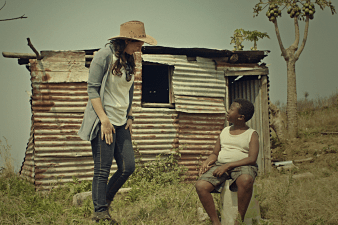
Moving to the substance of this campaign then. In 2013 you featured the wonderful young actor depicting ‘the African Child’ – just a great talent all around! But he was in a very distinctive role, would you agree? I mean, you don’t often see a ‘deserving child’ spitting out pastries ‘especially delivered’ all the way from the North. It’s both so mundane, ordinary – and subtly provocative at the same time. Are you not making fun of needy children thereof; are you suggesting that there aren’t children who would benefit from such gifts?
Of course, that is not our suggestion. And we are very aware of and engage in conflicts around the world, human rights issues etc. – also through our own projects in SAIH, where we focus on education and collaborate with student associations all over the world.
“The point with all our videos is to use humor to illustrate the stereotypical images reflected in charity campaigns. The point with that specific scene is again to illustrate how “the white savior” thinks he/she has all the right answers to what the poor African needs – which sometimes, however, turns out to be wrong. Then it is also the bigger message with our campaign.”
We really enjoy the fact that your project also includes the ‘Golden Radiator’ part, meaning recognition for the best aid video. What do you wish to say with these videos: that international aid as such does have a continued role, it just needs to be executed more carefully? What is the bigger message that you want to make with this campaign?
Yes, in many ways.
“Of course we are not against aid. The problem we focus on is how it is communicated. For decades now, we’ve seen the same stereotypical images of Africa in both the media and in fundraising campaigns. Africa is often portrayed as a country with poor, hungry children, helpless women and warlike men. It reinforces the image of Africans as an “exotic other”, which makes us think that we are substantially different from them. When we start believing that we are substantially different, we stop believing that we are all the same, and it becomes easier to accept that people are suffering. We believe that these images create apathy, rather than action. We need to educate ourselves on how stereotypes and simple solutions to complex problems are more damaging, than helping.”
SAIH wishes to create a bigger understanding for how a certain kind of communication can be harmful. That is why we started the Rusty Radiator Awards.
We also want to highlight the many excellent ways NGOs can communicate better – through the Golden category. Also this year, the nominated fundraising videos are really good examples, showing us that it IS possible to find other ways. This is also what we refer to when NGOs tell us that it is very difficult to find other ways to communicate poverty and need – in a way that makes people donate money and engage. We are aware of this dilemma, and have been there ourselves, but these examples show us the proof. NGOs here in Norway have also told us that the communication departments are very aware of the “stereotype trap” one can fall into, and that SAIH has contributed to making this even more important to work against.
See also the jury’s comment on this year’s Golden nominees, which explains more about what we want to see in fundraising campaigns. Our hope is of course that next year or the year after, we’ll only have the “Golden Radiator Awards”, as the “rusty” ones are disappearing. It IS possible!
Thank you SAIH and the Rusty Radiators team – we believe it IS possible too!

